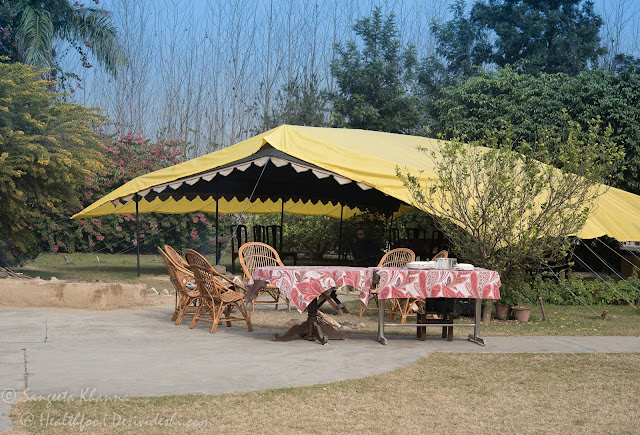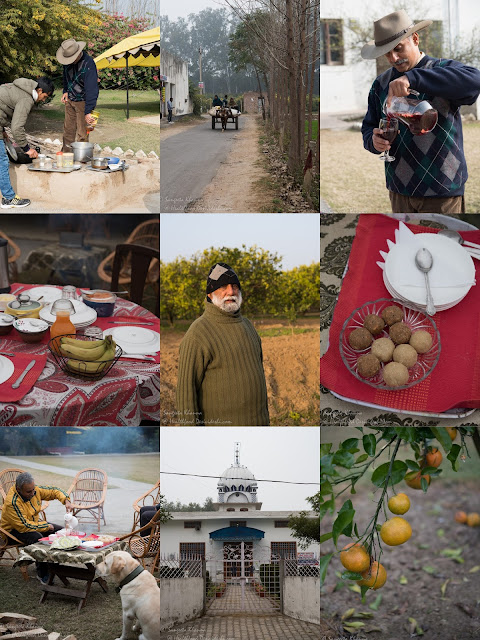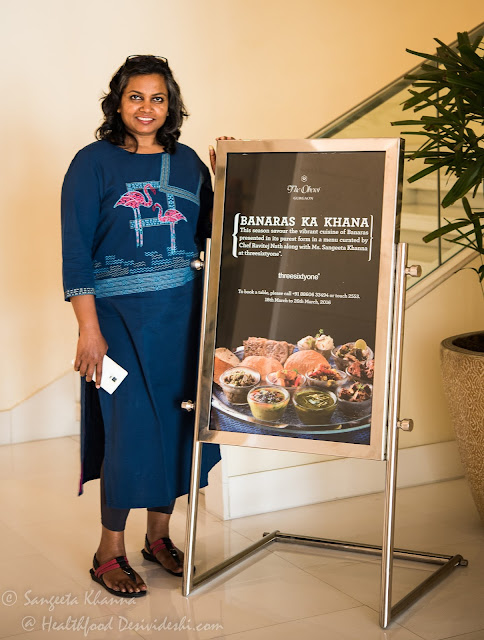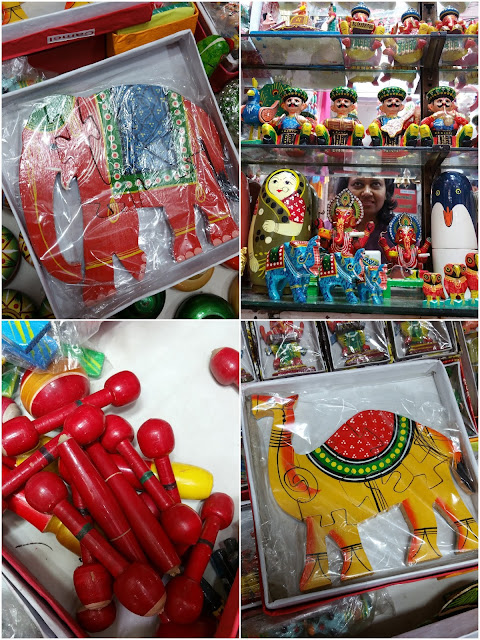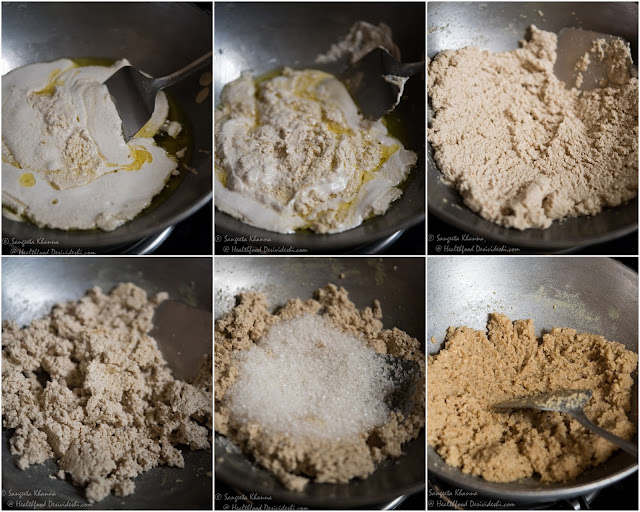Harkirat Ahluwalia received us and drove us to his home where he has created a wonderful cluster of yellow tents, bordering his huge verdant lawns, trees of several varieties of oranges, lemons and limes and a fire place. Citrus County has loads and loads of oranges, kinnows to be specific and the sweetest ones.
This is when we realised we have been transported into a typical Canada influenced Punjab village. Pun intended.
Punjab villages have been quite prosperous owing to the very hard working Sikhs, both who stayed back in the land and who migrated to earn dollars and send them dollars back to the land. It is very common to find people hoarding super bikes and flashy cars, most fashionable western brands of clothing in these villages and you will see them relishing the kachhi lassi, safed makkhan and makki ki roti with the same fervour. The best of both worlds to be honest.
Citrus County has very nice and clean tents with spacious modern bathrooms and a personal verandah which is surrounded by some greenery that provides privacy in a very aesthetic way. It is an ideal place if you want a break from city life and want to read, walk around the village and orchards, swim and laze around till you get hungry.
What I liked about the tents is that they have a nice study table and chairs inside the tents, good for someone who wants to read or write or catch up on work. Many of us have to touch base with work too while traveling. They don't use plastic so the water bottles were actually recycled wine bottles that was a good change to see. The heating system in winters and air conditioning (during summers) is a huge facility that you appreciate in the extreme winters (and even summers) this place witnesses.
They have a couple of rooms too and recently have built a Biker's lounge just besides the camp fire you see in these pictures. Harkirat is himself an avid biker and keeps going for long distance drives.
They have an efficient team of cooks who feed you warmly sitting close to the campfire. Though during winter months it felt too chilly during dinner time. We visited there in December last year.
Sometimes you would see Harkirat cooking a chicken curry by himself and fishing for complements, just like it happens in family gatherings. He would come up with a Sangria or his lovely wife Jasween would bake a cake sometimes.
You would get to taste some home made pickles and panjeeri, laddu etc made by their family elders and that is something very endearing about village life. Food at Citrus County is basic homely food, do not expect anything superlative here.
We met Harkirat's father Mr Bhagwant Singh Ahluwalia and we talked about varieties of citrus fruits and how he has planted so many fruit trees in their orchards and home garden. He is a treasure trove of stories about how this village Chaoni Kalan was established by his forefathers, how the Gurudwara was built and how he started growing kinnows on his land. I could sit and talk to him for hours if time permitted.
He also runs a highway dhaba called Dhaba Express as a hobby on the Chandigarh Hoshiarpur highway and the food is amazing. This is one dhaba you must stop at if you are driving past Hoshiarpur. If you are staying at Citrus County you can go there easily and eat the rustic dhaba style Punjabi food.
I like 'home stay' properties for the homely warmth and the stories that we share with the people who run such an endeavour. I think Citrus County brings back the joys of village life to you in a more comfortable and convenient manner. The best of both worlds as I mentioned.
You probably wouldn't get to dive into a pool (reservoir) at the 'tube well' the Punjab villages are known for but the swimming pool at Citrus County fills in for that quite aptly.
I recommend doing a tour of the orchards and see how kinnows are grown and harvested if you are visiting in winters. An early morning walk is a must do when you are there, every season has a new story to tell in such landscapes.
The village Gurudwaras and the markets are significant places you must visit. Citrus County keeps organizing events like Hola Mohalla and Baisakhi etc during significant Sikh festivals so you can plan your visit accordingly if you want to witness the festive colours.

